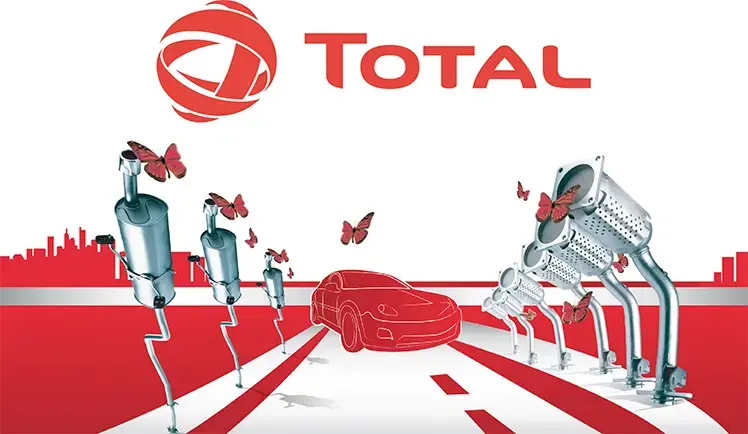
NEW GASOLINE PARTICULATE FILTERS (GPF)
Will a stringent new emissions regime mean manufacturers will have to consider fitting particulate filters to clean up gasoline engines?
When Euro 5 emissions standards were introduced in 2009 they changed the way the automotive industry approached diesel engines. Some manufacturers had been experimenting with particulate filters for over a decade, but a fivefold reduction in the particulate mass limit for oil burners suddenly made this technology compulsory. Now a similar shift is prompting OEMs to consider fitting particulate filters to gasoline direct injection engines too. The exact details of Euro 6C requirements for 2017 have yet to be finalized, much to the consternation of many of the engineers ETi spoke with for this feature. A new ‘real world driving’ element could place further emphasis on particulate reduction outside the existing NEDC cycle, but this is still very much open to discussion. For now, what we do know is that the particulate mass (PM) limit is going to stay at 4.5mg/km, but the particulate number (PN) limit for gasoline units will drop by a factor of 10 to 6x1011 per km, bringing it in line with diesels.
There’s no doubt this will present a huge challenge to powertrain engineers, but the general consensus is that OEMs could tackle it with in-cylinder methods alone. “I think the strategy of most OEMs will be to fulfill the requirements of Euro 6C with internal measures,” comments Dr Michael Winkler, head of powertrain at Hyundai-Kia Europe. “Adding a particulate filter increases the cost, which in the end the customer has to pay, and provides an additional source of backpressure. That’s particularly a problem for gasoline, where the backpressure has a very negative impact on combustion. The exhaust gas is very hot and with raised backpressure you have more of it trapped in the cylinder, which can lead to knock.” But there are a number of ways to reduce particulate formation in the cylinder. Improved turbulence, cam timing and fuel injection strategy are all part of the equation, but much of it is likely to focus on the delivery pressure and the design of the injectors themselves. “State of the art at the moment is around 200 bar,” says Winkler. “I think for Euro 6C this will be sufficient, but looking ahead to later emissions standards it may be that higher pressures will be required.” For fuel injection suppliers it’s a deceptively simple engineering task
When, not if
“For us, I think gasoline particulate filters are a question of when, not if,” states Christian Chappelle, head of powertrain at PSA Peugeot Citroën. “We are now ready to introduce them in some parts of our portfolio. There’s a lot you can do in-cylinder to reduce particulates, but we think there will be a practical limit, a bit like there was with diesel engines. There comes a point where the effort you’re putting into the injection system will start to impact the efficiency. It will also begin to cost more than switching to a GPF.” Chappelle remains tight-lipped as to exactly which models might adopt GPFs, but the rumor is small-engined variants of larger, heavier cars are likely to be the first candidates. The International Engine of the Year category winning 1.2-liter PureTech unit in the likes of the Peugeot 308 and Citroën C4 would be a logical first application. The biggest technical challenge encountered on diesel engines is undoubtedly how to get rid of the soot that accumulates in the filter. For some in the automotive industry this will lead to uncomfortable memories of clogged DPFs and the headlines that followed, but all the indications are that gasoline particulate filters would be a very different proposition.
Higher exhaust gas temperatures mean that GPFs should be able to regenerate passively most of the time, which greatly simplifies the task of managing them – so much so that Chappelle doesn’t anticipate using an active regen strategy at all. Instead, he believes existing sensors and a sophisticated soot model will be enough to monitor the GPF with no additional hardware. “Gasoline is a completely different situation from diesel. It’s much easier to burn soot and you have far more opportunities during normal driving to achieve the right temperature,” he comments. “It just increases the cost if you start adding a lot of control systems, which would be a pity for our customers if those systems aren’t needed. We think we can prove that it will be sufficiently efficient without any systems to control it.”
It’s unclear yet what level of uptake there will be for GPFs, but it’s likely that most manufacturers will at least consider them as an option. In the USA, 38% of all cars sold now come with a GDI engine, while the global GDI market will be into the tens of millions by the time Euro 6C and the EPA’s rumored particulate number restriction legislation come into effect. And that means that the potential market for GPFs is a very large one indeed
Do you know which lubricants are recommended for cars equipped with a GPF?
Low SAPS lubricants are needed for GPFs, namely our TOTAL QUARTZ INEO lubricants